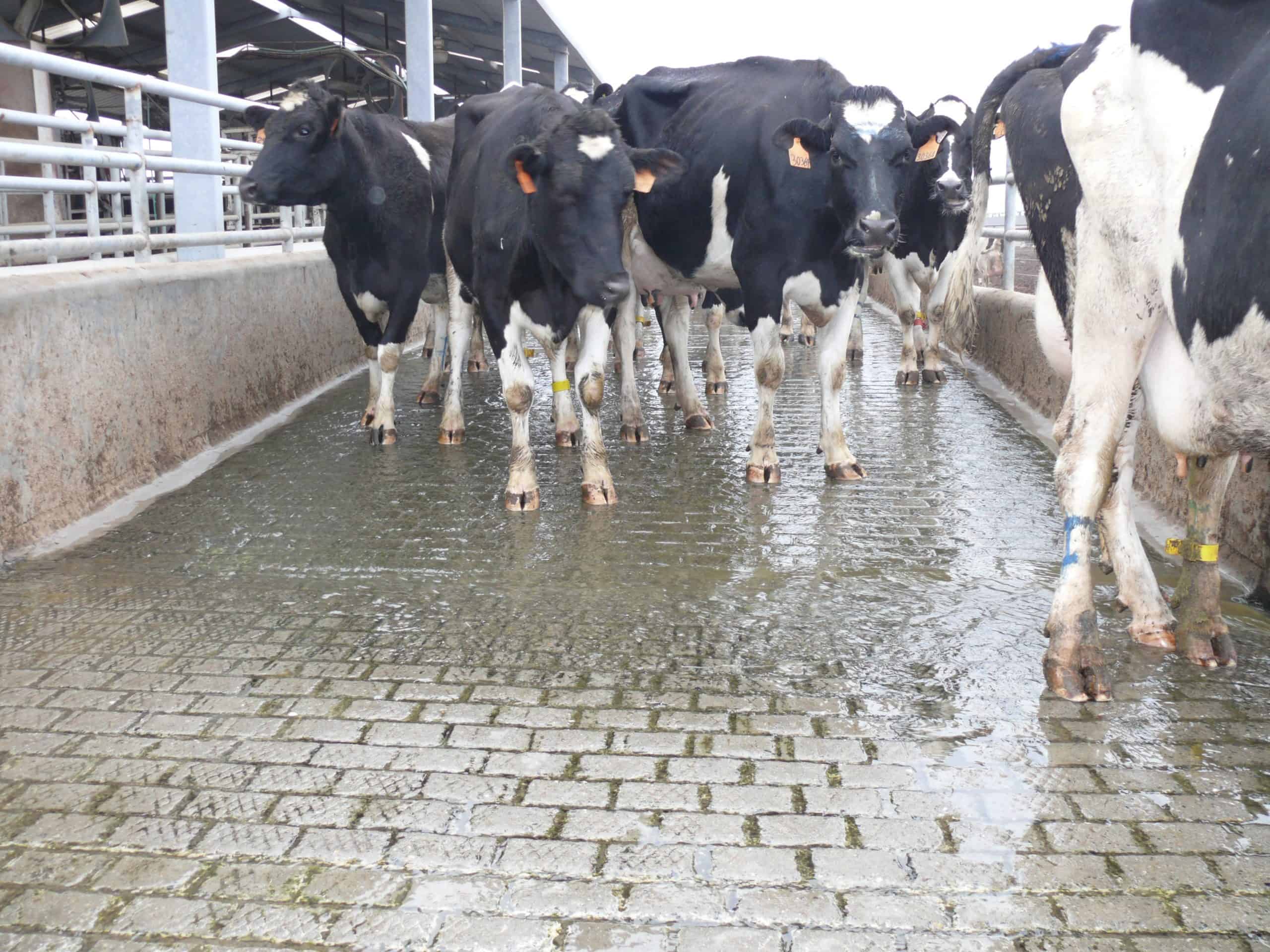
Although the winter months may bring a schedule of its own, your dairy footbath schedule should not fall to the wayside. Proper footbathing at regular intervals helps prevent the spread of infectious hoof diseases. It can also lead to less lameness from painful dairy cow hoof problems.
Some producers may wonder, what is the main criterion for a dairy footbath schedule?
The condition of the cows’ legs determines dairy footbath schedules. “The more manure contamination on cows’ lower legs, the more frequently we must footbath. While some dairies with excellent leg hygiene may use a footbath only once a week, others must footbath 5 to 7 days per week,” says Dr. Nigel Cook of the University of Wisconsin-Madison, and creator of the scoring system.
As shown in the graph below, the scoring of a leg depends on its cleanliness; the higher the score, the dirtier the leg. Once a producer has scored all legs in the milking herd, the percentage of cows scoring a 3 or 4 determines how often the herd should go through a footbath (see graph below).
Source: Footbath alternatives
Another factor that influences footbathing is a cow’s lactation. “Early lactation cows should be footbathed at the maximum frequency determined by the leg hygiene,” says Dr. Cook.
Producers should continue to monitor leg hygiene to alter their footbathing schedule as needed.
Footbath additives such as HealMax and HoofMax can help producers with overall hoof hygiene. HealMax delivers results without heavy metals or formaldehyde. HoofMax can help producers reduce their copper sulfate usage by up to 80%, lowering the cost of a footbath program.
Talk to your veterinarian or hoof trimmer for more information about footbath schedules and treatments.